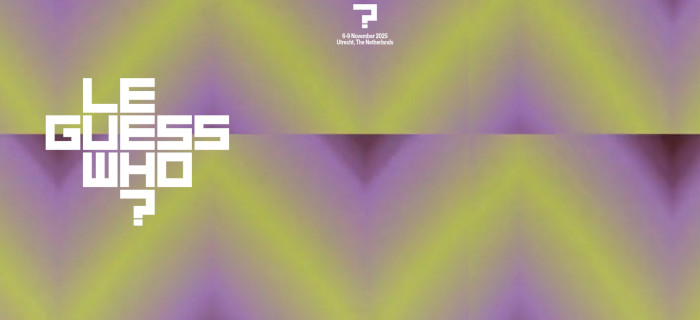Le Guess Who? has been redefining what a music festival can mean — not only through bold programming, but also through the way it thinks about programming itself. In a world where culture is increasingly shaped by market logic, this festival offers something different: empathy as a radical act.
[MOŻESZ PRZECZYTAĆ TEN WYWIAD PO POLSKU]
This summer, I had the great pleasure of taking part in Unsound LAB Summer School, where I met Bethnay Amber Andrzejak — the person responsible for the Le Guess Who? program. The workshop they led focused on the idea of radical programming and what it looks like in practice. The longer they spoke, the harder it was for me to believe that festivals like this can actually exist. Could something like that happen here, too? I knew I had to talk to Bethany again — and I did, just before my first-ever visit to this remarkable festival.
Let’s start with the idea of radical programming – what does it mean?
Radical programming, the way I see it, means persistently prioritizing equity, empathy, and humanness within a system and an industry that are deeply connected to colonial history, and by now completely absorbed by capitalism. This industry essentially operates through the exploitation of the many for the benefit of the few. At Le Guess Who?, the festival’s vision, mission, and core values act as a framework within which radical programming has become the methodology to realize them. Initially, the goal wasn’t to be radical — it started with care, love, and understanding. These values are deeply embedded in our mission.
But in the world we live in today — shaped by our past and present — there’s an urgency to lean into care, love, and understanding so deeply and relentlessly that it becomes radical. Persistently prioritizing equity, empathy, and humanness shouldn’t be considered radical; it only appears that way in a society where such values aren’t favored. That’s what radical programming means to me.
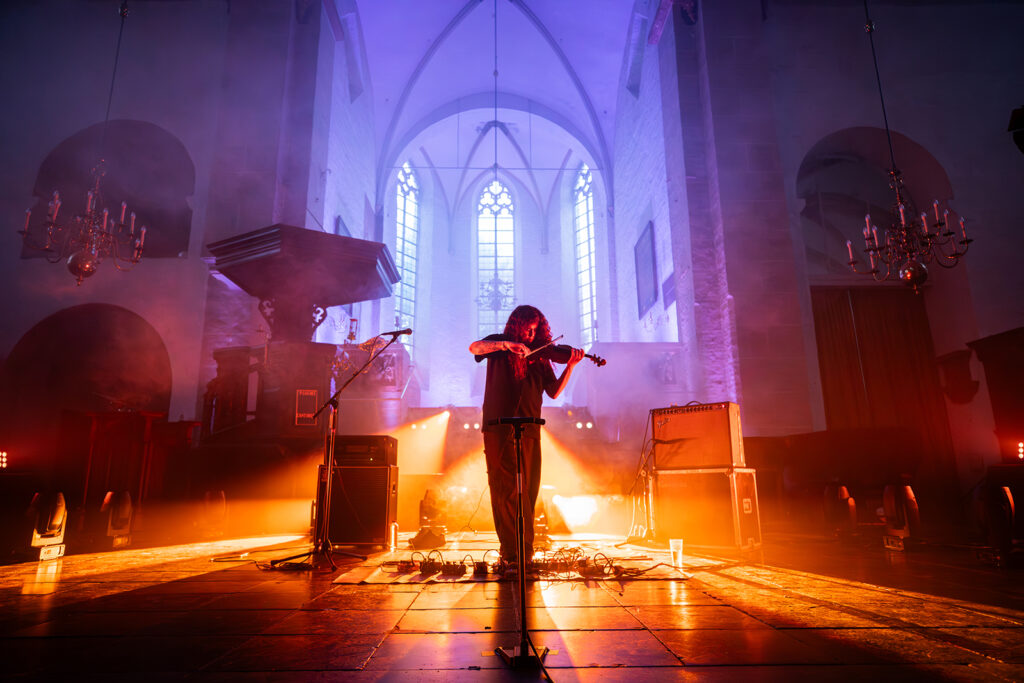
How does radical programming look in practice?
In practice, there are several tools we use to bring this idea to life. The first and most important one is care — care for the artists we work with, for the conversations we have with them, and for the collaborations we build. This also means bringing care and humanness into every interaction. We look at where our fees go globally — whether they’re concentrated in the US and UK or distributed more equally. We present lineups without hierarchy, walk the extra mile to support artists with visas, and stay mindful of the institutional power we hold.
A clear example is the way we approach visa processes. We’re very aware that some artists have smoother, easier journeys than others, and this can depend on which continent you live on or which passport you hold. So, part of our work is acknowledging these inequalities and consciously redistributing our resources — time, money, and space — to benefit those who have been systematically excluded from them. Another crucial part is investing in local communities — in ways that move away from extractivism and toward generosity and shared resources. These are some of the practical tools that, for us, define what radical programming looks like.
The story about artists struggling with visas really moved me when I first heard it. Could you share what happened and how you responded to it as a festival team?
In the Netherlands — and in Western Europe in general — the cultural sector currently focuses a lot on inclusivity and diversity. There are policies and even grants aimed at creating more diverse and inclusive spaces. But that stands in stark contrast to visa policies. We often invite artists from all over the world to perform, and they apply for their visas only to receive responses like: “We don’t think they have enough reason to return to their country; therefore, the visa is denied.” It’s absurd. One example that really stayed with us is the father of one of our curators from last year, Arooj Aftab. He’s an incredible musician himself, and we invited him to perform. He had never seen his daughter play live. He applied for a visa and was denied for exactly that reason. When we asked if he wanted to try again, he said no — he felt completely dehumanized.
In 2024, we faced quite a few similar cases. Our team is very experienced and hands-on when it comes to visa processes, but after years of these struggles we decided to release a public statement. We asked: how can a country call for inclusivity and diversity, yet deny entry to the very artists who embody it? It makes no sense. After the statement, a higher-level organization that coordinates global visa centers reached out to us, and we started a conversation about how visa policies could be changed to improve access for artists. Thanks to that contact, every artist’s visa this year has been accepted so far — and we’re confident the remaining few will be too. It’s been an incredible development.
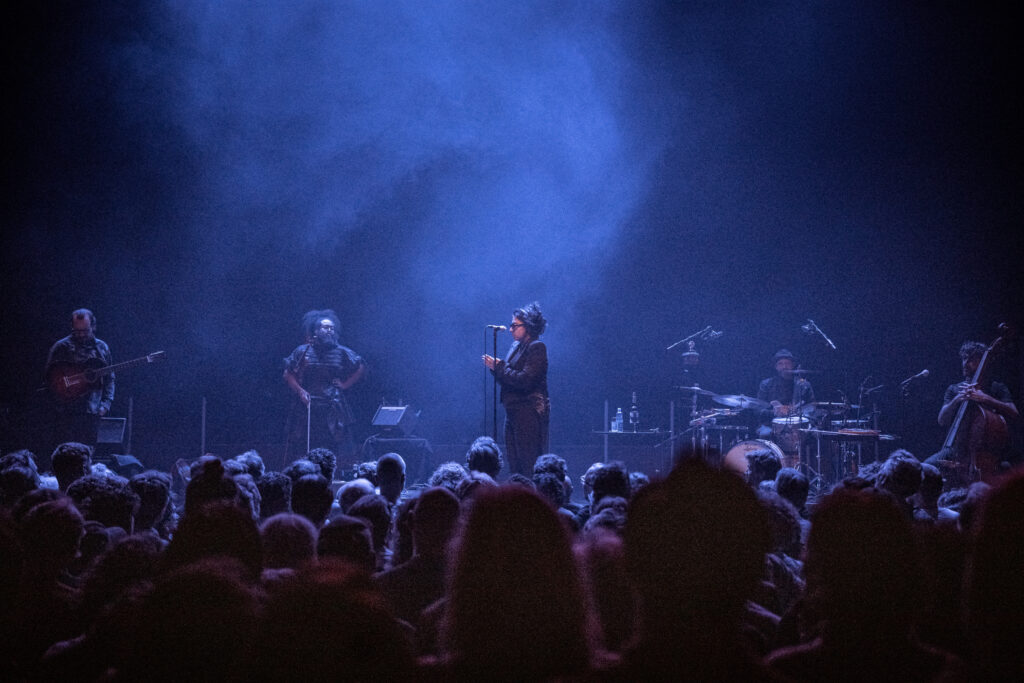
Do you think this experience could inspire broader change — maybe even influence visa policies in other countries?
Unfortunately, change in this area is much slower than we’d like it to be. But we’ve been trying to keep the conversation alive — for instance, in our Discourse program, where we invite both artists and people involved in cultural policy. It’s a topic that needs constant attention and collective pressure. In the Netherlands, many organizations saw our public statement and have since reached out to us for advice or to share their own experiences. That’s something we really encourage — transparent communication between institutions about visa processes. The more knowledge we exchange, the stronger our collective position becomes. Ideally, we want to help create a larger shift at the European level, since visa policy is shaped within the EU. So yes, I believe it can — and hopefully will — influence other countries over time.
Another aspect of Le Guess Who? work that really stands out is the collaboration with local communities in Utrecht. How do you approach these partnerships, and what do they bring to the festival?
We’ve noticed that the relationship between established institutions and grassroots collectives has become very damaged. There’s often tension and mistrust because, for a long time, institutions have mistreated these smaller communities. So we asked ourselves: how can we repair and nurture those relationships? Our team, which focuses on local collaborations, comes from grassroots organizing ourselves. That lived experience helps us understand what’s needed to rebuild trust. Every year we work closely with three local collectives or communities. They are paid a fair wage, receive a program and production fee, and are supported by our team from start to finish — creatively, logistically, and in terms of communication.
They are invited to create something that truly serves their community. Sometimes that means part of the program is public, and part remains private, open only to their members. It’s not about chasing validation or big numbers. It’s about investing in relationships, mutual learning, and creating a healthy exchange.We see this as a long-term process — one that continues throughout the year and across festival editions. It doesn’t always result in a major project every season, but we stay in touch, collaborate in different ways, and keep the conversation alive. The goal is to strengthen the local ecosystem rather than treat these groups as one-time partners. We also prioritize supporting communities that face systemic barriers to funding. For instance, this year we’re working with a Muslim queer collective that’s often excluded from grants due to the religious component of their work. It’s important for us to use our resources to amplify voices like theirs.
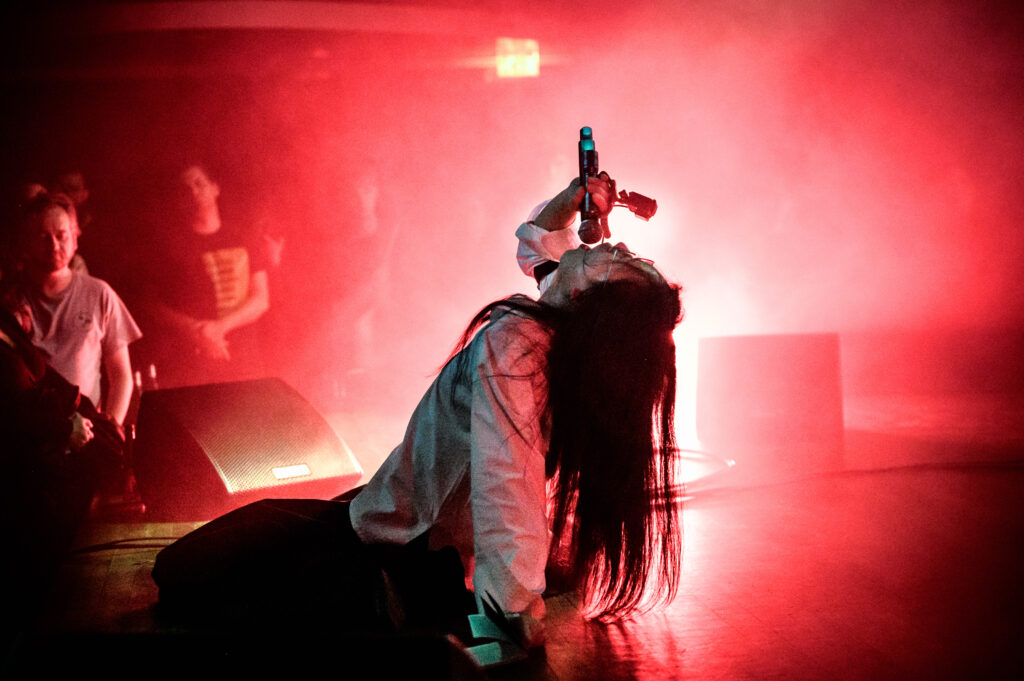
When I found out that Le Guess Who? doesn’t do headliners, I thought it was such a bold move — especially in a world where everything revolves around “big names.”
For us, it connects directly to the question of equity. If you look at a world map and examine how performance fees are distributed, they’re usually heavily centered around the US and the UK. Artists from those countries often receive much higher fees than artists from, for example, the African continent. When you think about that in the context of colonial history and the idea of reparations, it becomes clear that geography shouldn’t determine an artist’s worth. So, we decided to close that gap. We set a maximum fee that’s substantially lower than what most other festivals pay, which allows us to raise the lower fees — to create more balance.
Outside of the financial side, we also present artists in a completely non-hierarchical way. There are no headliners; the lineup is in alphabetical order. We think of the festival as a patchwork quilt — every artist forms an essential piece of the whole. If one piece were missing, there would be a hole in the fabric. This approach is very much tied to our belief that artists are not products or machines used to sell tickets. They are human beings, deeply connected to their practice and passion. That’s true no matter where they come from.
Of course, there are moments when this approach creates friction. Some artists or their teams are used to working within hierarchical structures. But we always say: there’s no space for ego here — not for us as programmers, and not for the artists we work with. And that’s okay. If our way of working doesn’t align with someone’s expectations, then maybe we’re not the right platform for each other. Still, we’re surrounded by an incredible network of artists who share our values — people motivated by love for music and by the desire to create a more empathetic world. Even if they might earn less here than elsewhere, they gain something different in return: full creative freedom. They can experiment, take risks, and do things they’ve never tried before. We don’t ask them to please a crowd. We just create space for them to be entirely themselves.
How do you measure the impact of discovery – one of the festival’s core ideas?
It’s interesting, because discovery is something you can’t really measure in a quantitative way. You can’t say, “this many people discovered something new.” But sometimes we hear stories that feel like clear signs that our vision is working. For example, I once spoke to a visitor who comes to the festival every year. She told me she always arrives with an open mind — no expectations, no plan — and just dives in. She listens, explores, learns the context behind the music, and every Monday after the festival she wakes up feeling that something inside her has shifted. Each year she leaves with a deeper sense of empathy and understanding for people whose lives and experiences are different from her own. Hearing that is incredibly powerful.
Another moment that really stayed with me happened last year. We collaborated with a Southeast Asian queer community that created a space for their members during the festival — including a communal meal for queer Southeast Asian organizers from across the Netherlands. One of the guests later applied to collaborate with us herself. She told us she was raised in an Indonesian family that wanted to fully assimilate into Dutch culture, so she had almost no connection to her roots. Being part of that space changed her life — she’s now traveling to Indonesia for several months to reconnect with her heritage. For me, this is how we measure impact: through stories like these. It’s not about numbers. It’s about transformation — even if it happens quietly, one person at a time.
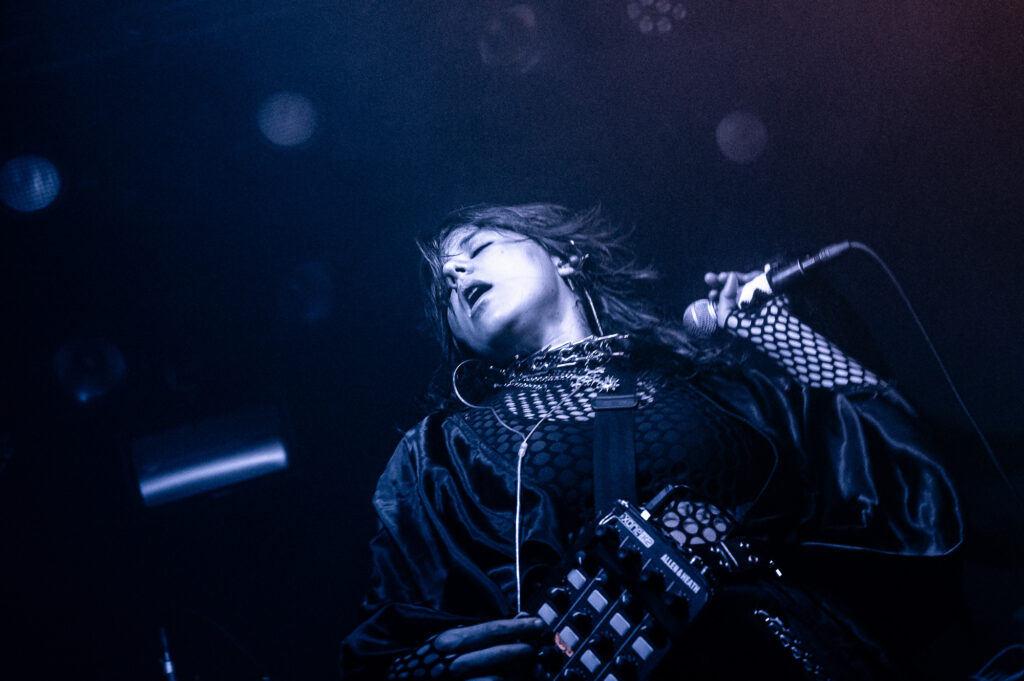
This year, you also launched a fundraising campaign — something quite rare for a festival of this scale. Why was that step important for you, and what does financial independence mean in your work?
Independence is really at the core of who we are. It’s something we try to protect at all costs, because it allows us to stay true to our values. But the reality is that every year we end up slightly short in our budget — and you can only keep doing that for so long before it becomes a problem. So we started a fundraiser to fill that gap, and the response was better than we expected. It was beautiful to see how willing our audience was to contribute. It made us realize that what we do truly matters to people — enough for them to give something back.
There’s also a larger principle behind it. The recent discussions around KKR — and the fact that some major festivals are now owned by companies investing in harmful industries — really showed why independence is crucial. Being tied to those structures would directly contradict our vision. Of course, government funding isn’t perfect either, but there are degrees of compromise. We’re very careful about who we work with — for instance, we collaborate with Ableton, one of the few independent companies that align with our values. We also uphold a boycott list and ask our venues to switch to ethical drink brands whenever possible. So for us, independence is not just a financial matter — it’s a moral stance. It’s about choosing alignment over convenience, even when it requires more effort.
You have a fascinating background and history in programming before joining Le Guess Who?. Could you tell me a bit about that path — how it all started for you?
Before joining Le Guess Who?, I was very active in grassroots organizing — long before diversity and inclusion became mainstream topics. This was before the George Floyd protests, at a time when institutions often questioned why such spaces were even necessary. I worked with a FLINTA-focused multidisciplinary platform, and those collaborations were usually unbalanced: lots of negotiation, lots of unpaid “exposure.” It was frustrating. That experience made me realize I needed better tools to explain why this work mattered. So I studied gender and post-colonial theory — not just to understand it academically, but to be able to articulate these issues in a way that decision-makers couldn’t dismiss. Later, I continued with cultural musicology, because I wanted to explore how art, music, and critical theory intersect.
Joining Le Guess Who? was a breath of fresh air. It was the first time I didn’t have to fight to justify my perspective. I could bring both my academic knowledge and lived experience to the table, and there was an immediate understanding that these ideas were valuable. Even when something wasn’t fully understood yet, there was a willingness to create space for the conversation. That’s still quite rare. Many institutions talk about inclusion on the surface, but hesitate when it comes to making real, sometimes uncomfortable changes. What’s special about Le Guess Who? is that it’s not afraid to take those steps — even when they challenge the status quo.
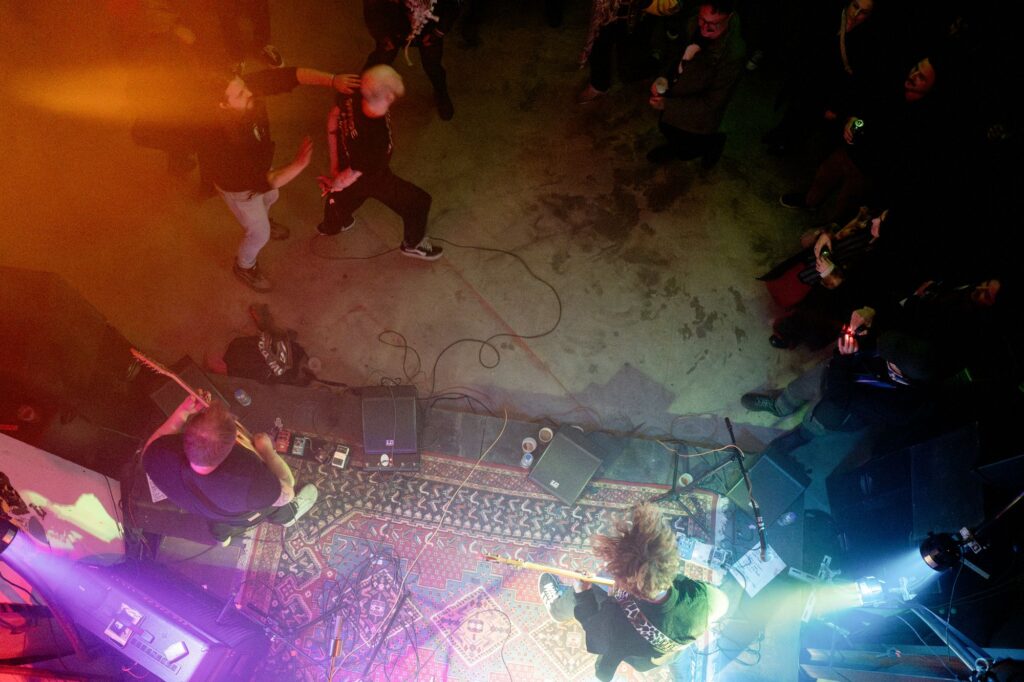
Your background is so specific, and now you work in such a unique environment. What made you interested in this kind of work in the first place?
I actually wanted to be a pop star when I was a kid — that’s probably where it all started! (Laughs) But when I look back at my family, I can see how both music and social awareness were always present. On my father’s side, my grandfather grew up in a mixed British–Jamaican family and worked in the mines — a very working-class, multicultural environment. My dad works as a train conductor and has always been active in the union; he organizes strikes and advocates for workers’ rights. So, from that side, I inherited this strong sense of fairness and solidarity.
At the same time, many people in my family were passionate about music, so those two things — music and a hunger for equality — were always intertwined for me. I started organizing club nights quite young, and through friends who were also active in the scene, I discovered Le Guess Who?. I was a huge fan of Alice Coltrane, and when her choir performed at the festival, it completely captivated me. I couldn’t always afford to go when I was younger, but it felt like a space where something truly special was happening. Later, when a position for a programmer opened, I wrote a kind of manifesto about how I see programming and why radical approaches to curation matter. They called me — and it just clicked. For me, music and equality naturally came together. That combination became my way of creating small but meaningful change in the world.
Looking back at everything you’ve experienced so far, what advice would you give to other curators or organizers who want to work in a more radical and inclusive way?
First of all, calculate for the extra time and labor that this kind of work requires. Programming in a truly inclusive and radical way takes more effort — more care, more communication, more patience. Many organizations underestimate that and try to do it within the same time frame as before, which is why good intentions often fall apart. Advocate for that extra time within your team or institution; ask for the space to do it properly. Second, be aware of your positionality — who you are and what privileges or limitations come with that. Adjust your ego accordingly. If you’re in a position of power and surrounded by people who look and think like you, then it’s your responsibility to make room for others. But if you’re someone who rarely sees yourself represented in these spaces, take up space. Own it. Both sides require awareness and balance. And third — be relentless. You will face challenges, rejections, denied visas, closed doors. But keep going. Take risks — or rather, what we call “risks” are not really risks; they’re investments in culture, in people, in the future of this ecosystem. Especially for those of us working in Western Europe, our privilege comes with a responsibility to use it — to stay relentless on behalf of others.

